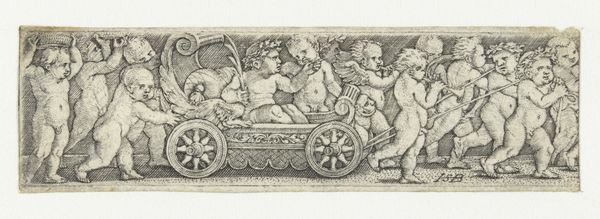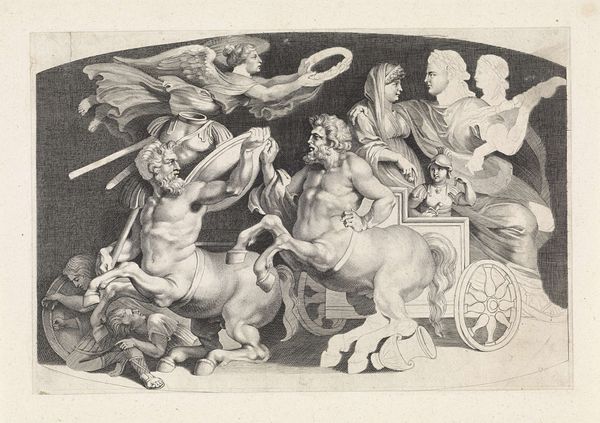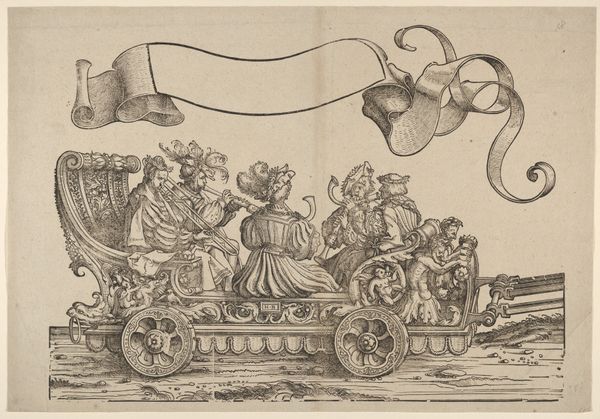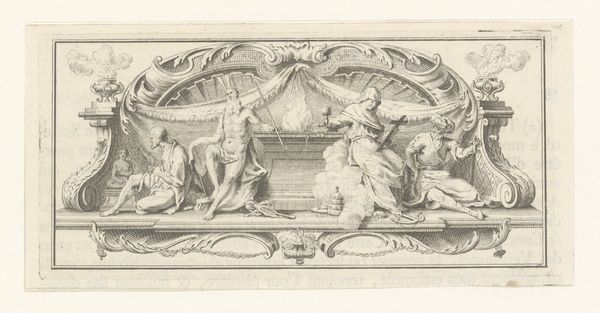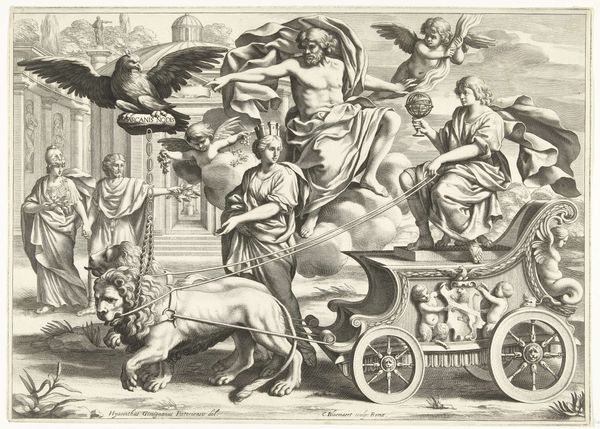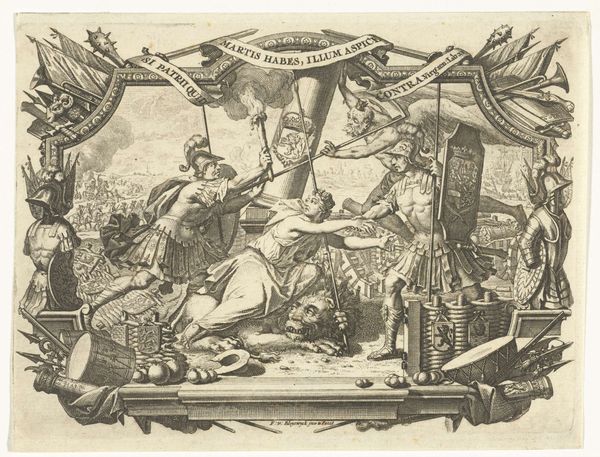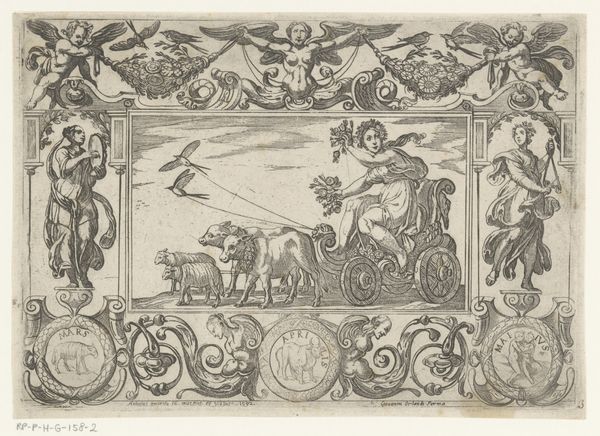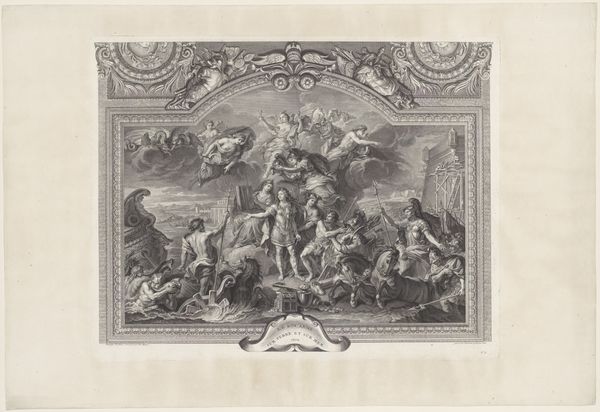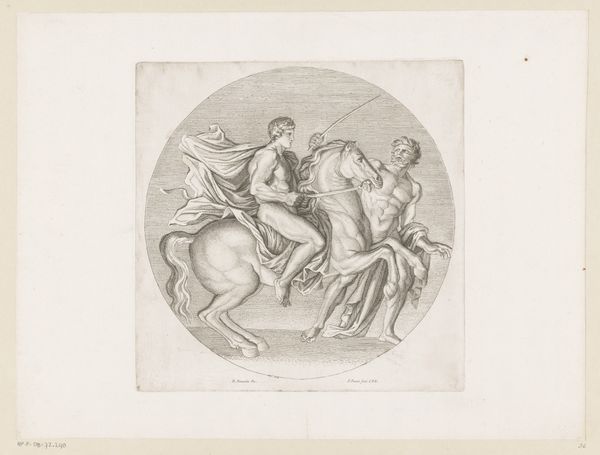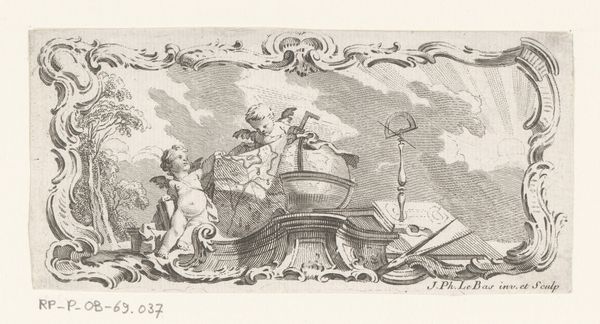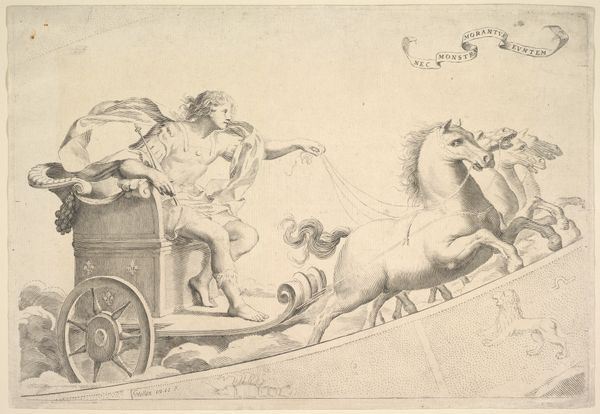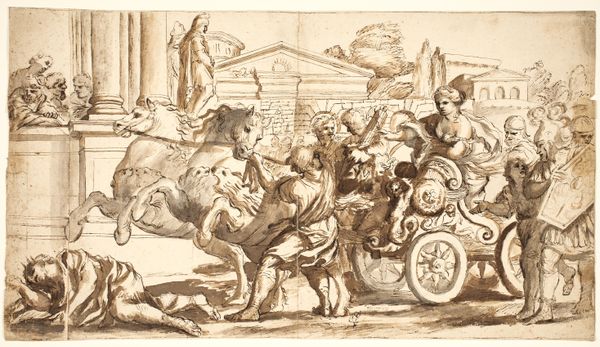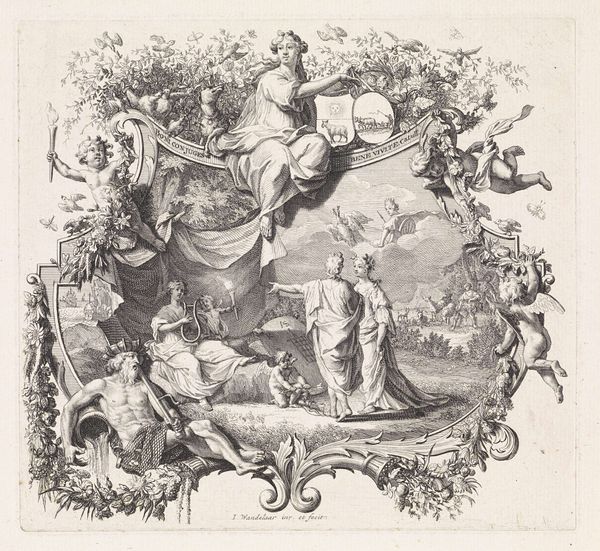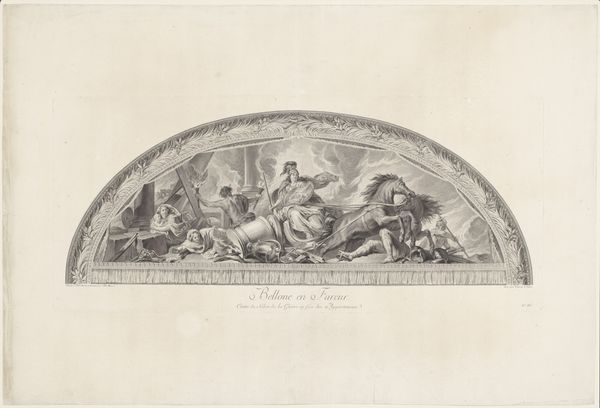
Dimensions: height 227 mm, width 307 mm
Copyright: Rijks Museum: Open Domain
Curator: This engraving, entitled "Onyx met een Romeinse praalwagen en twee centauren", was created by Simon Fokke between 1765 and 1767. Editor: It feels like I'm peering into a miniature world rendered with remarkable precision. The line work creates a real sense of depth, giving a sculptural quality despite being an engraving. The tight composition, contained within this decorative border, adds to the feeling of a self-contained symbolic universe. Curator: Exactly. Fokke's use of classical imagery invokes ideas of power, myth, and empire. Notice the centaurs pulling the chariot, symbols of untamed nature brought into the service of civilization. Even the figures riding in the chariot represent various classical virtues and Roman ideals. Editor: Yes, the allegory is very on the nose. But it works well because the composition directs our eyes throughout the plane. The figures aren’t merely placed, but actively arranged to build on this sense of dramatic unveiling. Semiotically, the linear structure offers both the message, and its careful articulation in a classical visual syntax. Curator: And think about the material itself, onyx. As a gemstone it's suggestive of the rarity of power and excellence these figures represent. Even the laurel wreath offered by the winged figure functions not only as a symbol of triumph, but also of sustained achievement. It suggests an ongoing cycle. Editor: It is interesting how this black-and-white print alludes to the colorful classical world, though. What is emphasized through form has much to tell about cultural perception at the time of production. Did Fokke imagine this Roman chariot and centaurs as monochrome? Probably not. So it begs questions about our reception. Curator: These engravings of classical scenes really fueled the neoclassical fascination, imbuing present-day society with those historical associations. We interpret history, then reflect and reinterpret our contemporary condition in relation. Editor: Well, it's definitely given me much to consider—particularly the use of such careful craftsmanship to construct and contain its narrative within an enduring symbolic schema. Curator: For me, the artwork's true power lies in its visual layering. We simultaneously observe myth, allegory, and the values once ascribed to an ascendant empire and what they mean to us today.
Comments
No comments
Be the first to comment and join the conversation on the ultimate creative platform.
